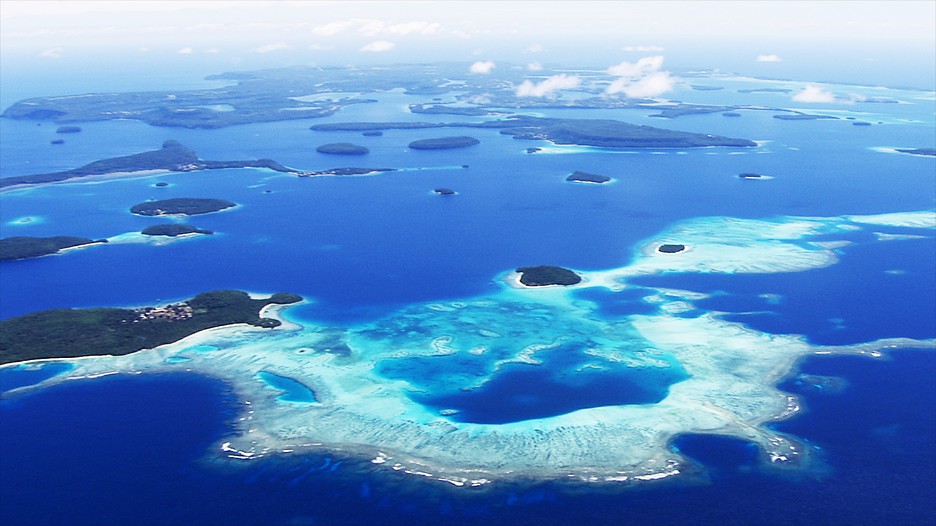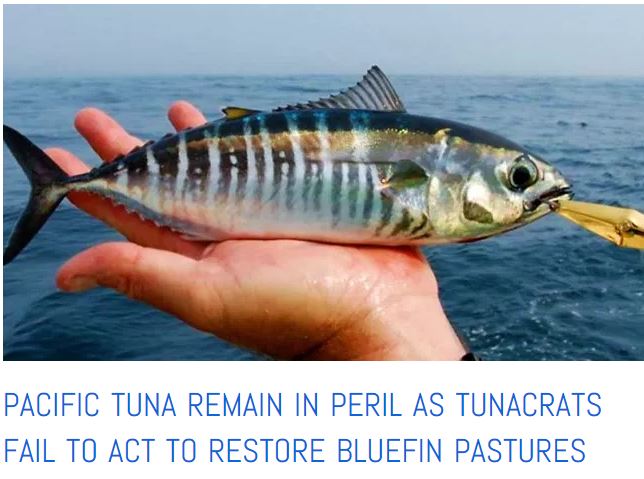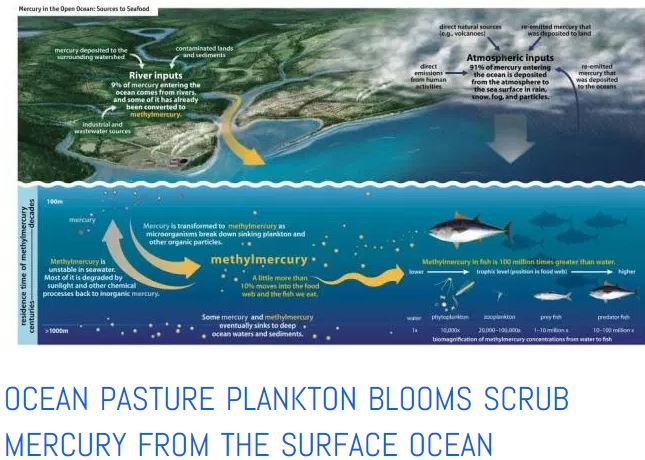
Eating Tuna Is A Game Of Russian Roulette
The toxic burden in ocean fish is not all the same.
It’s not news that some fish are many times more dangerous than other fish.
The news is that the number of live cartridges in your ‘tuna revolver’ depends only partly on which fish you eat, but even more on where your fish comes from.
The good news is that by restoring ocean pastures to health natural bio-cleansing of these toxins can be rapidly achieved and we can bring back the healthy fish!
Ocean fish like tuna that come from areas of the Atlantic and Pacific Oceans closest to industrialized regions of the world, aka the Northern Hemisphere, are likely to contain 36 times more pollutants than those fished in remote parts of the South Pacific, say scientist boffins from Scripps Institute of Oceanography.
Reported on in a new paper the researchers had tracked toxins in tuna from around the world. What they found was that ‘one measure did not fit all.’ We all have come to know that some species of ocean fish like swordfish and sometimes tuna are especially contaminated but the new research shows that the location of fish, as much as its species, is what determines whether a fish is safe to eat or NOT.
“The pollutant levels in seafood and tuna in our case, can be heavily determined by the location where it was caught,” said lead author Sascha Nicklisch, at Scripps Institute. “It is important to know the origin of catch of the fish, to know the amount of pollutants in your fish.”
They hope the study will help advance understanding of how toxins enter our food supply through seafood, and how to manage fisheries to reduce that risk. Published in the June issue of the academic journal, Environmental Health Perspectives, the team tested tuna from locations around the globe for the presence of pesticides, coolants and flame retardants. Together, they’re part of a class of chemicals called persistent organic pollutants, which accumulate in body tissue and make their way up the food chain.
The bigger the fish the higher levels of toxic chemicals, so tuna some of which grow very large offered a perfect group of fish to study. Yellowfin tuna, for example, are large fish but have more limited home ranges than some other tuna species. They were perfect to the researchers map their results as regional toxicity.
“They (yellowfin) stay in the location where they are born and hunt,” Nicklisch said. “So we tried to use these tuna to create a snapshot of local contamination.”
The team of scientists spanned the globe and analyzed fish from each the regions. To collect the samples, staff researcher Lindsay Bonito (yes that is her real name and not a nom-de-plume for a bonito tuna spy slipped onto the team) traveled from Tonga to Panama, Louisiana, Hawaii, Guam, and Vietnam, to fish for tuna.
“I was tasked to go out and actually secure tuna from all over the world,” Bonito said. “I would either go out and fish for it, or contact fishermen.”
Screening for 247 toxic compounds the researchers mapped pollutant concentrations for each area. Average toxin levels in tuna from the most polluted areas were 36 times those found in the least polluted areas. The differences between individual fish were even higher. Toxic levels in the most and least contaminated tuna samples varied by a factor of 180X , according to the report.
The most contaminated sites were industrialized areas of the northern hemisphere, including ocean regions off the Atlantic Coast of Europe, and the East and West Coasts of North America where industrialization has been impacting the regions for the longest period of time. The South Pacific Islands which are the most remote regions and across the equatorial boundary see far less pollution are were relatively clean.

TONGA ranks as having the most toxin-free fish in the new study.
“The sites where we caught them are known to be more pristine, such as kingdom of Tonga,” he said.
Most of the tuna analyzed in the study would be considered safe under current guidelines, the researchers said. But there were wide variations between regions, and some areas, including the Gulf of Mexico and the Atlantic Ocean around Europe, had high levels of unsafe fish.
“The most important part of the take-home message is that it’s important to know where your fish was caught,”
Ocean toxins like the ones in this report and more importantly mercury are here to stay unless we take effective action to remove them from the oceans.
Our industrial age has been sending vast amounts of toxins into the world’s oceans both by means of pumping them out of sewers and industrial outfalls and even more due to the fact that the most pernicious of all pollutants, mercury, comes from the burning of coal that fuels power plants. That mercury goes up the smokestack and is carried by the winds to distant parts of the world’s oceans, but clearly, the downwind waters that are closest to the smoke stacks get the worst of it.
The crisis of high and rising mercury in the oceans is growing worse — recent reports state that the amount of toxic mercury in the oceans will double by 2050 if nothing is done to remove it. A paper in the journal Environmental Toxicology and Chemistry on Feb. 2, 2015, confirms that mercury is shown to be rising in Yellowfin Tuna in the Pacific at a rate of 3.8% per year!
“Mercury levels are increasing globally in ocean water, and our study is the first to show a consequent increase in mercury in an open-water fish,” author Drevick of the University of Michigan says. “More stringent policies are needed to reduce releases of mercury into the atmosphere. If current deposition rates are maintained, North Pacific waters will double in mercury by 2050.“
Fortunately, there is a practical affordable solution/antidote to the toxins problem in our oceans.
On land where we encounter mercury and other toxins in the environment the toxic problem arises when it moves in water. The longer it remains in the water the more accumulates in fish and those fish become tasty toxic time bombs.
The sinister thing about much of this toxicity is that it doesn’t cause immediate deadly effects in humans rather it accumulates in us. Slowly over a long period of time, it poisons our organs and especially our brain.
The “Mad Hatter” of Alice in Wonderland was “mad” because hatters used an abundance of mercury in the making of felt to make hats. It shows up as symptoms much like those of senility save that onset of mercury poisoned senility can begin even in childhood. Eventually, it will poison our bodies more broadly leading to a slow terrible death.
Natures Antidote
The best means of treating mercury, and most other chemical toxins, once they are in the environment, indeed the only practical means, is to create biofilters of living aquatic plant life through which the poison laden waters passes and the poison is captured.
The more organic plant life the more micro-particulate and dissolved organic carbon is present which acts as sticky chemical magnets for mercury and other toxins. The mercury and toxins bind to the organic carbon and sinks and is effectively buried in sediments thus placed out of harm’s way for fish and us for geologic time.
This natural plant-powered bio-filtering is now a common practice in freshwater environments, it all that we have found that we can employ to save us from our toxic mercury legacy. The only way the enormous amount of mercury and other toxins in the oceans might be reduced and mitigated is to sink it out of the life filled surface regions into the abyss and seabed where it will be buried in sediments and safely sent back into the deep earth for geologic time.
Restoring and Reviving Ocean Pastures Is The Natural Bio-Filter Solution
The means to do this is through the same organic carbon biofiltering made possible by employing aquatic plants, this time the plants are ocean phytoplankton. The more plankton, the more sticky toxin loving organic carbon, the more effective the mercury and toxin capture and sinking becomes.

Plankton blooms are the world’s most effective, indeed the oceans only mercury biofilters
Plankton blooms whether natural or intentionally created as I have proven is very possible and inexpensive and is the single means to effectively capture and move toxins in the environment safely away from fish and other life.
The greatest threat to the environment is waiting for someone else to save it.
The worst of all things we might do is doing nothing about this toxic crisis when the simple affordable solution is at hand. We have disturbed the balance of nature and we must act responsibly to help restore that balance. Thriving ocean pastures are unquestionably the worlds’ most efficient toxin scrubbers, natural chelators.
The vast majority of toxins and mercury in the presence of vibrant ocean plankton blooms is moved into the abyss in just a few weeks time leaving little to contaminate and poison fish that live nearer to the surface. The good news is that we can restore and replenish ocean pastures to a state of healthy abundance and that in doing so they will rapidly rid the world’s oceans of deadly poisons.
In a world with replenished, restored, and vibrant ocean pastures the global ocean toxin crisis can be treated. In the bargain, we will enjoy restored oceans full of an abundance of healthy fish and best of all I may safely make and enjoy tuna fish salad sandwiches with my grandchildren.
This is important.
It’s a question of life or death. I choose life. And we’d best hurry!












